Math can be a daunting subject area to tackle. We may have experienced our own math trauma in school which led up to grow up believing we weren’t good at math resulting in a fear or dislike of the subject. Some of us did well in math. We learned the exactness of math and the clear answers it expects and rested in the solid belief that there is an answer in math and we will persevere to find it.
I remember talking with friends in school as a young student, and finding that students fell into one of two categories: Those who loved Math and Science and those who loved English and History. I reflect with sadness. I wish I didn’t grow up believing I didn’t like Language Arts and History because I wasn’t good at them…what a tragedy to miss out on so many wonderful educational opportunities because I had already made up my mind that I wasn’t good at those subjects. Same with those of us who felt that way about math and science.
Part of the blame rests in how these subjects are taught and what the school system expects of the student. Now that we are adults, we can renegotiate our experiences about school and hopefully arrive at new conclusions about our educational journey.
How does this relate to math? And specifically Waldorf math? Exactly what I loved about math in school: exactness of the answer and there being just the one, is not the case in Waldorf math. Instead, you begin with the anwer, let’s say 12.
“What makes 12?” The teacher asks the students. Not just one answer makes 12, as one student offers, “3 x 4″, and another student offers ” 2 x 6″ and yet another student says “24 divided by 2”, and soon the whole class erupts in answers. You could answer this question every second of the day for an entire school day and still have more answers. In fact, you’d never run out of answers because there are an infinite number of solutions to make 12.
Math is dynamic and exact, beautiful and chaotic and always mind blowing.
Do you still dislike math? Are you still worried you can’t teach math to your children?
It’s my deep belief that the best mathematicians in the world happen to be the poorest teachers. They are lousy in my opinion. They are wonderful, brilliant mathematicians, but they are not brilliant teachers. They tend to be impatient, and aren’t skilled at breaking down complex math concepts for the average person. They can’t understand what you don’t understand and think much of math is obvious. I truly believe that those of us who struggled the most with math make the best teachers, and here’s why. I believe that if you struggled with math, disliked it and feared it for any number of reasons, you end up being a patient, empathetic and resourceful teacher because you remember how lost, helpless and small you felt as the teacher taught math. It was probably too fast for you. Maybe too complex. And once you stumble in math, it’s sooooo hard to pick yourself up in time to catch up with your class.
Let’s create a new experience for math. One that will cultivate a love for math in your children and heal your math trauma. Let’s start with some beautiful math materials to spark the curiosity and inspire a love of learning.
Math Haul |Treasures From Jennifer
These wooden educational products by Treasures from Jennifer are some of the most beautiful pieces in our homeschool room. They are well made, durable and all natural. They are also expensive and take up lots of room. These items accompany our math main lesson blocks. We use them to practice the multiplication table, number facts, and more. These items are primarily for my 9-year-old daughter, but the geometry materials will be used by both my 13-year-old son and my daughter.
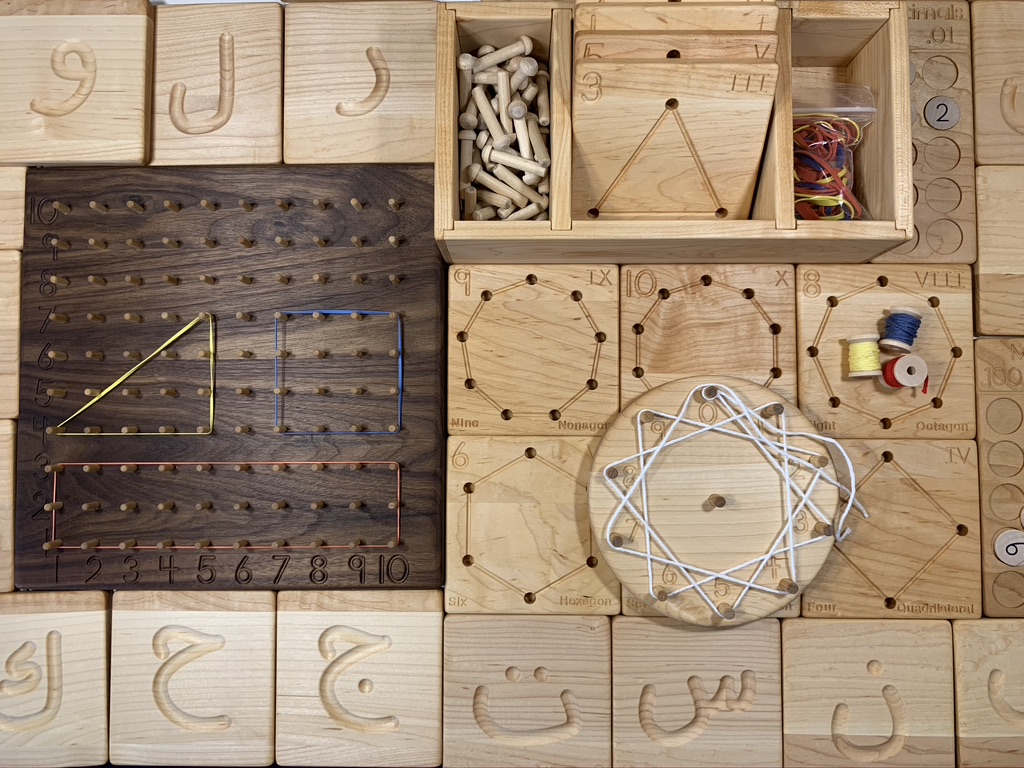
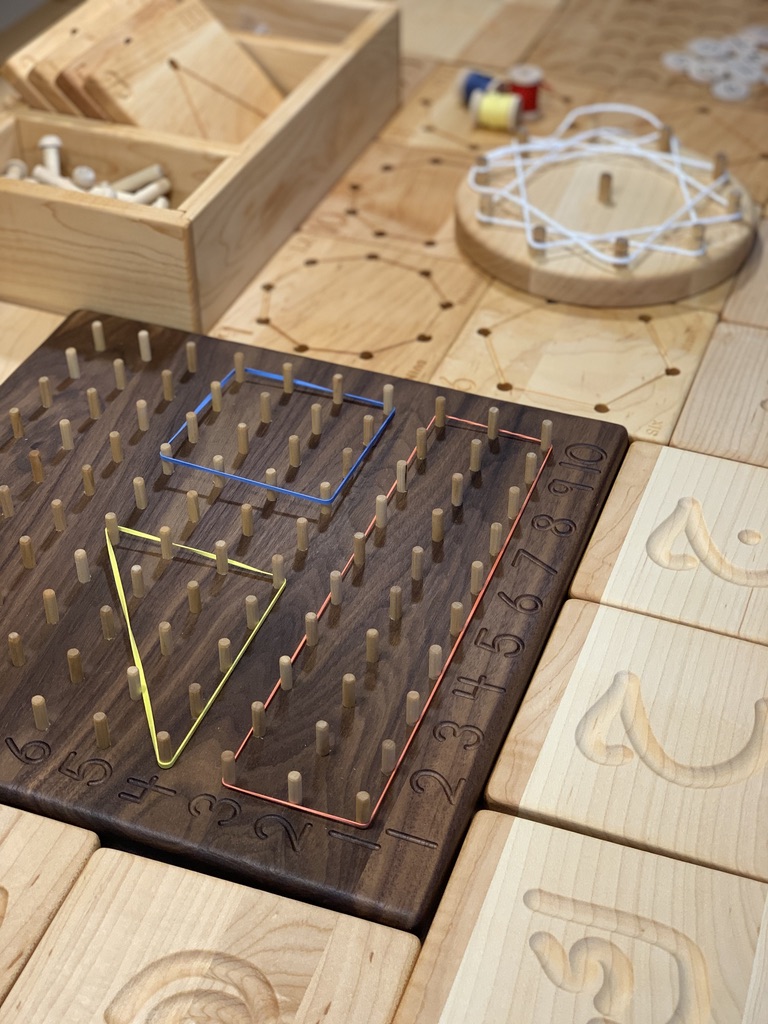
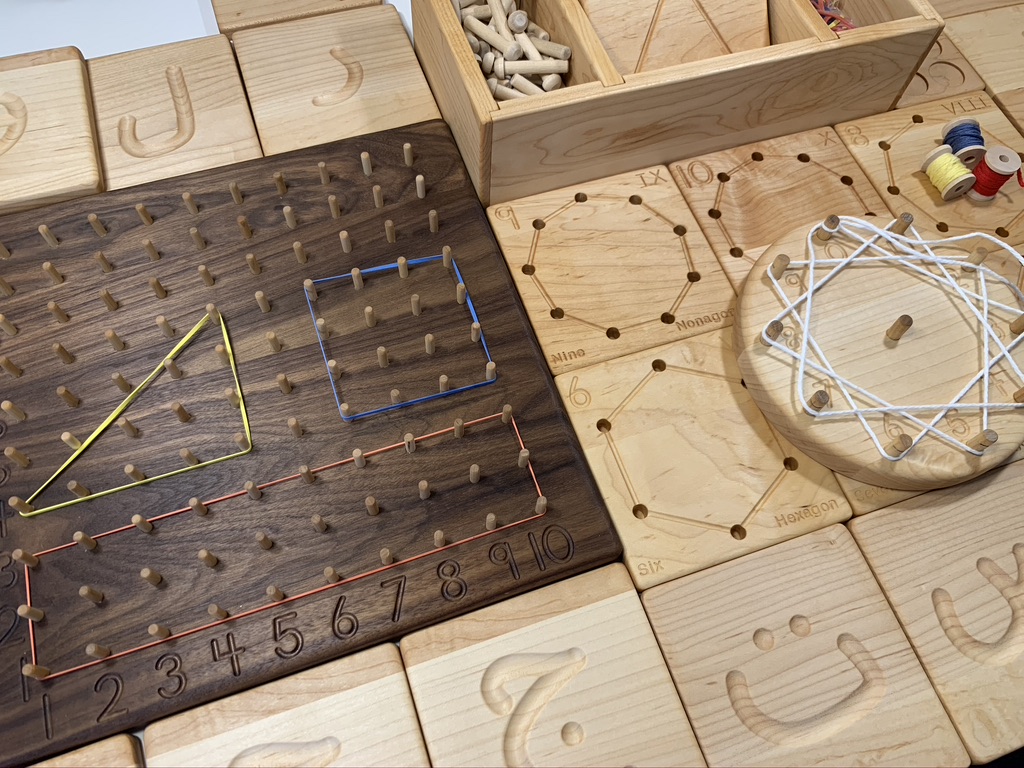
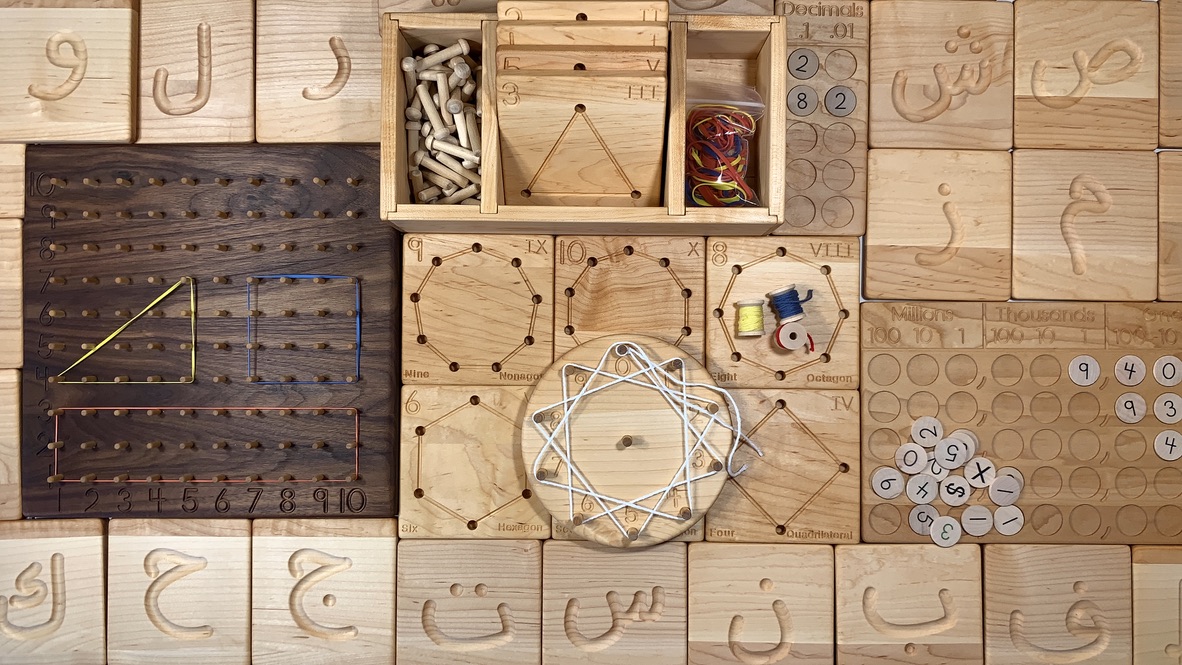
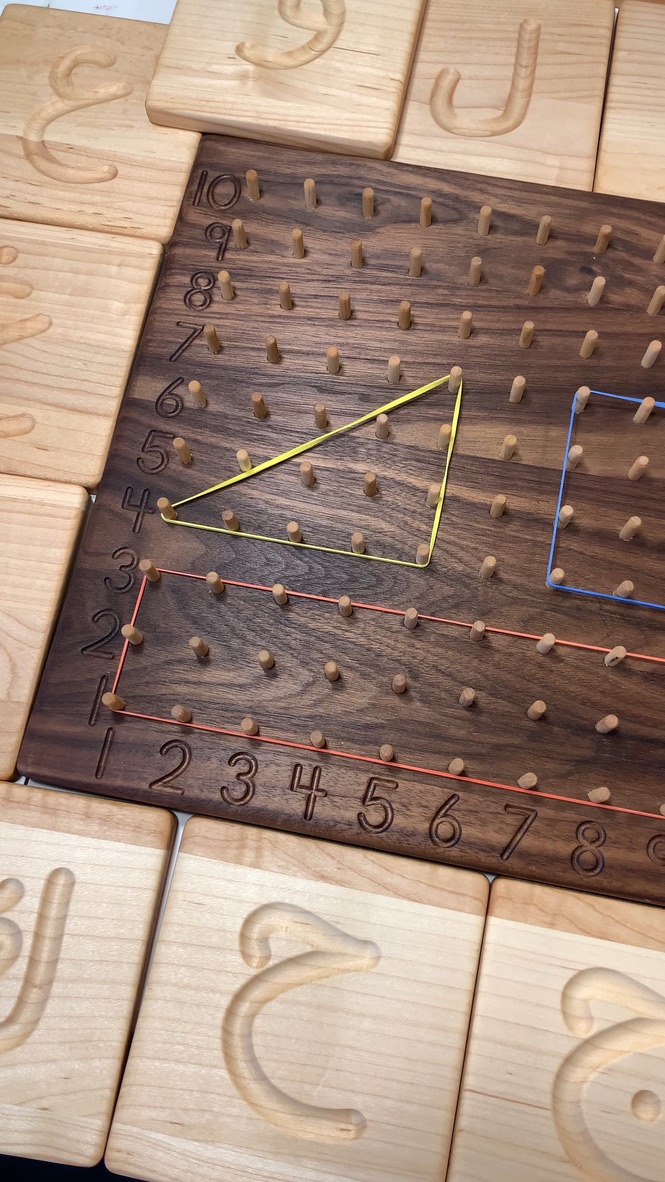
Waldorf Math | Grades 1-3 | Living Books, Games and Curriculum
Do you want to make math meaningful, educational and enjoyable? It may seem like an impossible task, but it can be achieved! I’ve collected a number of living books and games to enhance our math main lesson block. These materials are suitable for students grades 1-3 but can be enjoyed by older students as well.
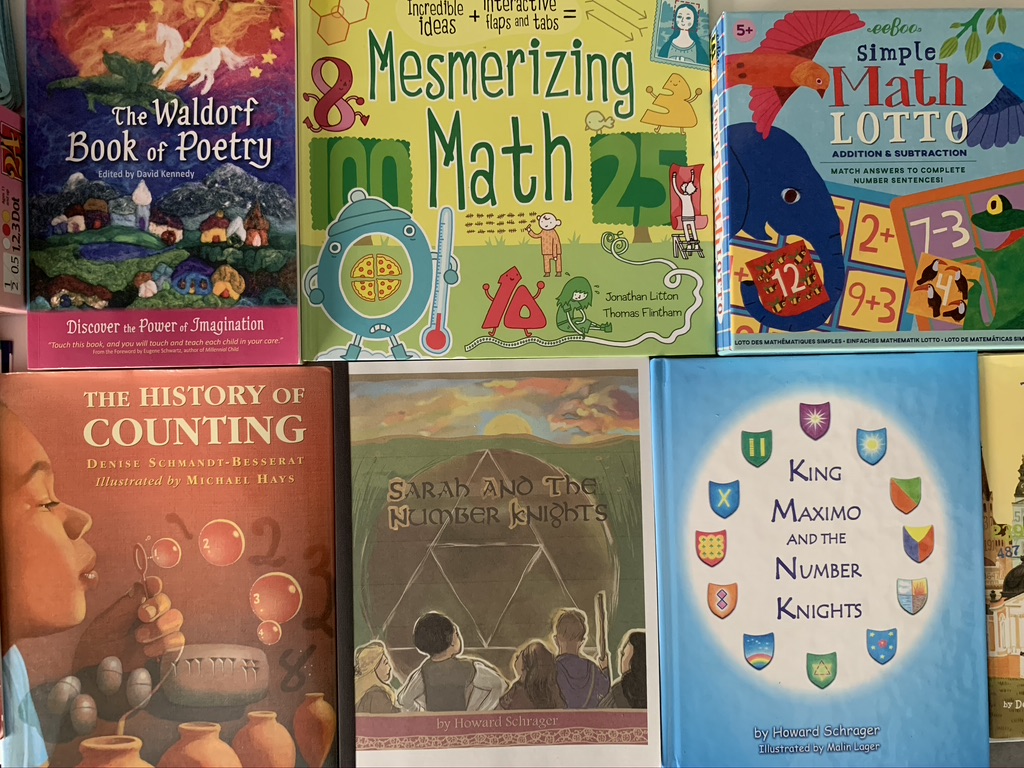
I’m putting together this unit to complement our main lesson block on math. We have been relying on our Live Education Waldorf curriculum and for this unit, I’m referring to Grade 2 and Grade 3 math main lesson books. I love adding Math Games into our math units and any time of year! I have accumulated a number of math games and each time we do a math unit, I pull these out and we play them during our opening activities. I love math books! And these days there are so many fantastic math picture books. I’ve written a blog post about them so you can see our nearly complete collection (we keep adding to it), as well as a video on them so you can browse the inside of these books.
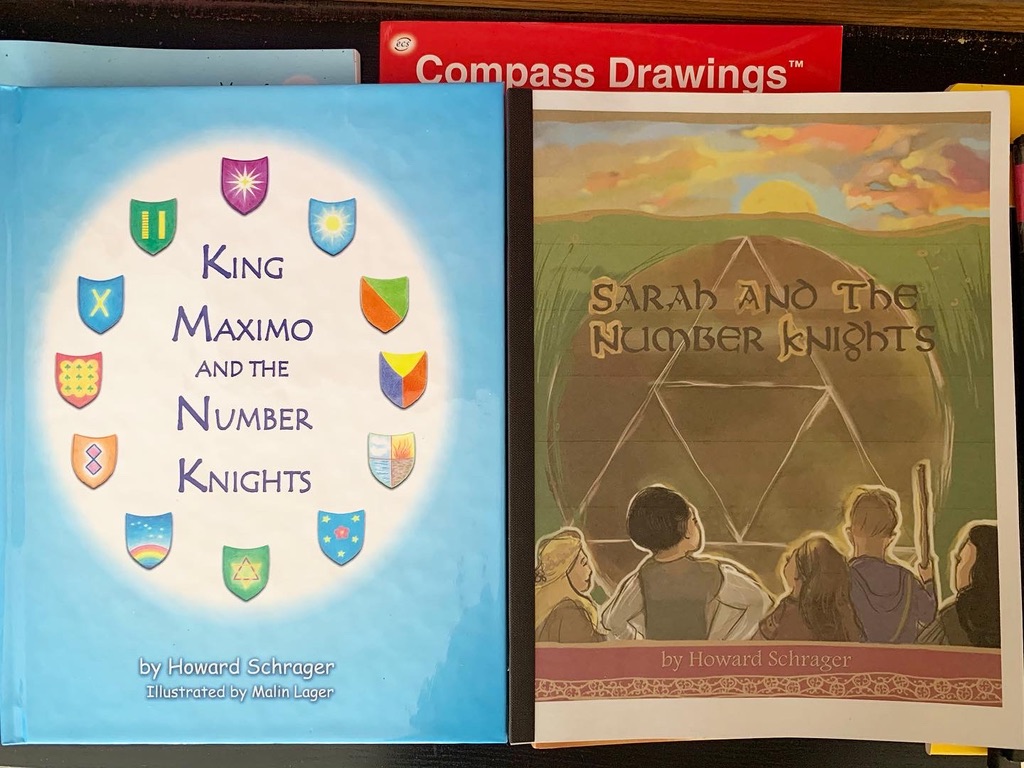
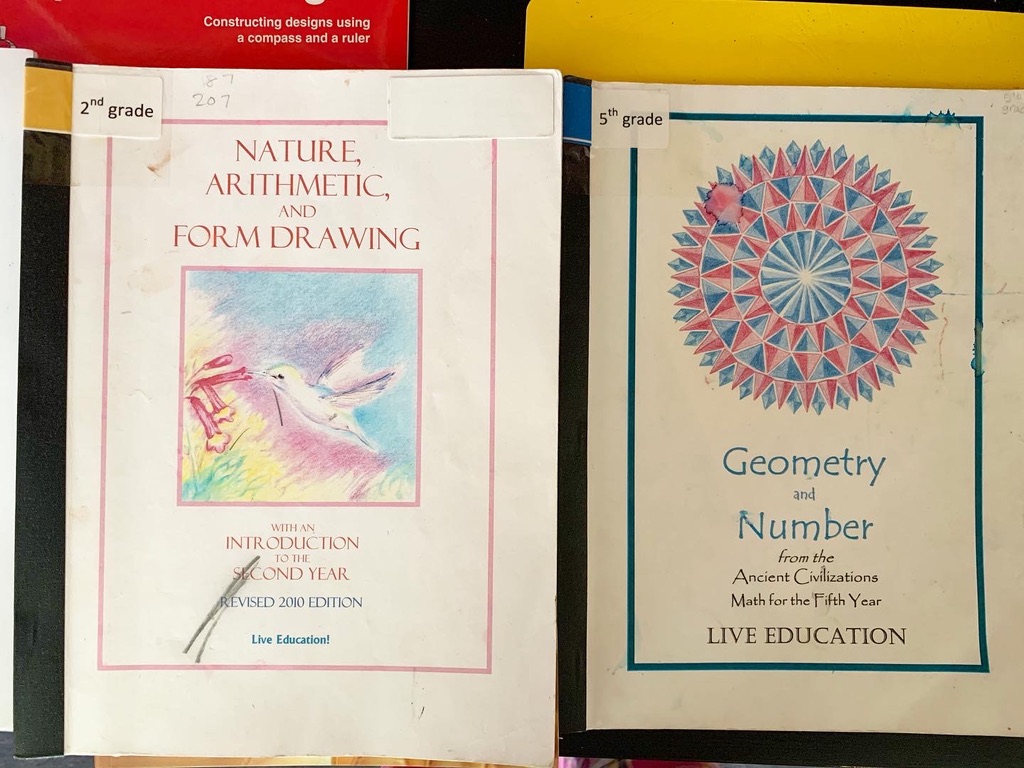
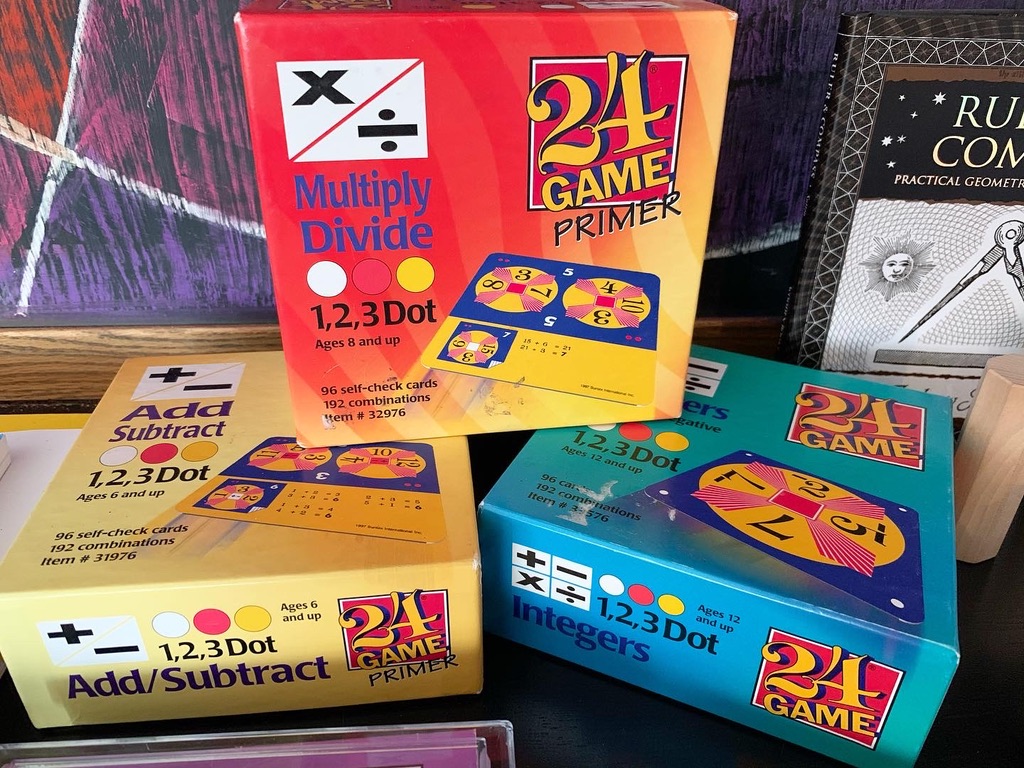
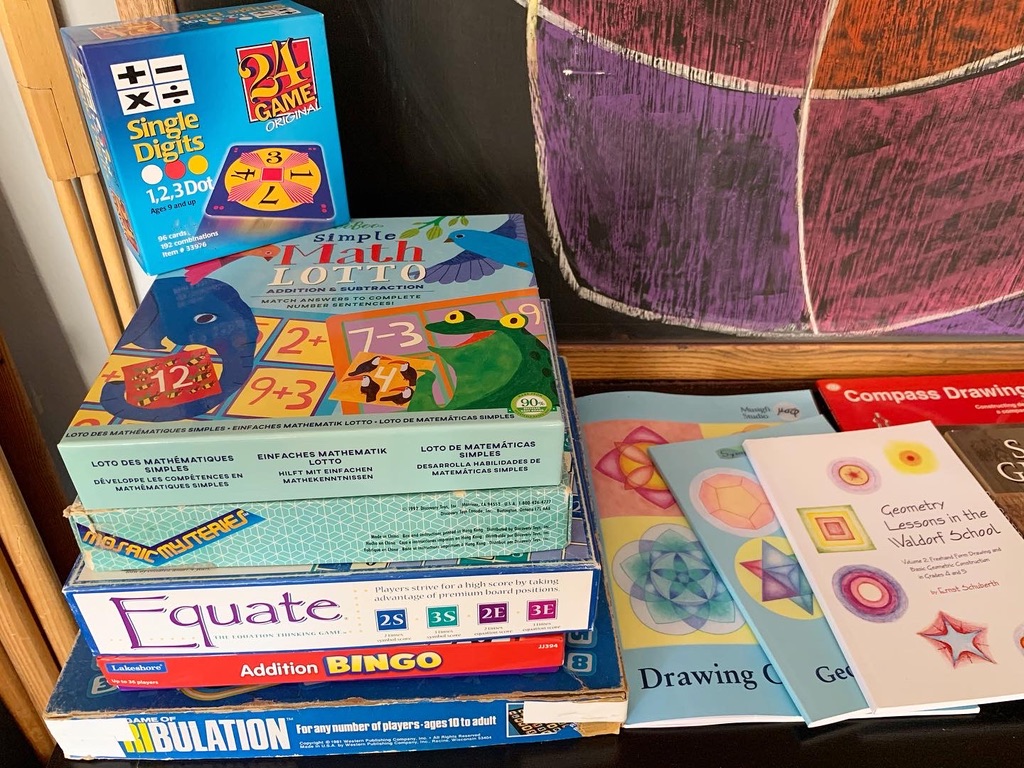
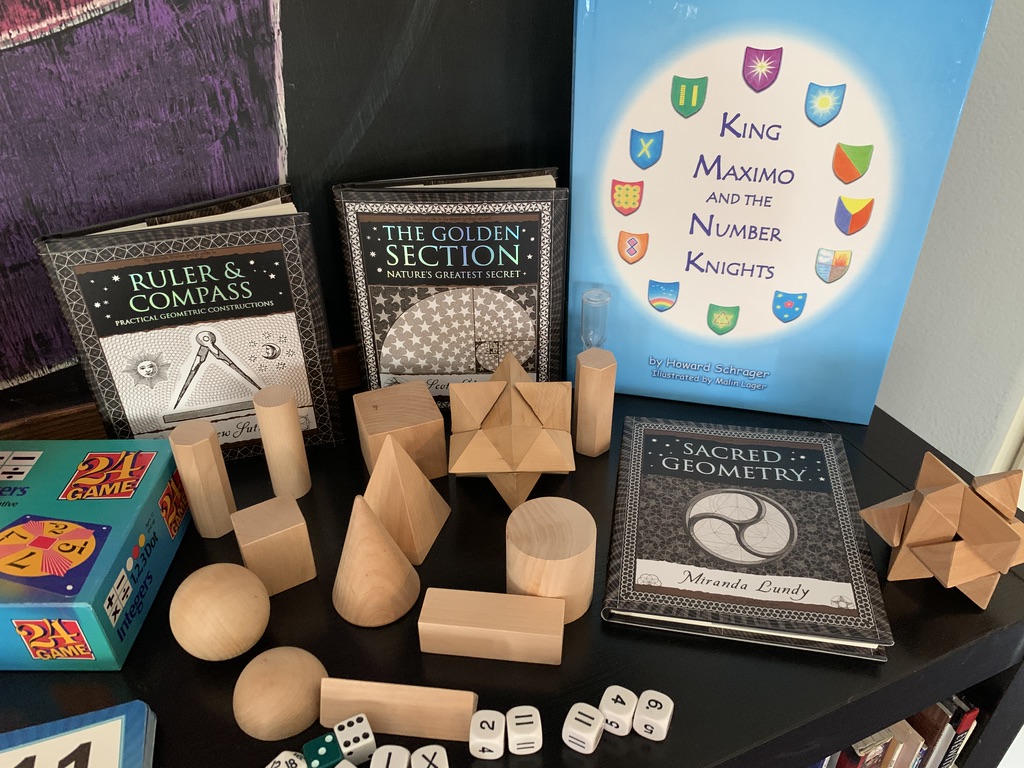
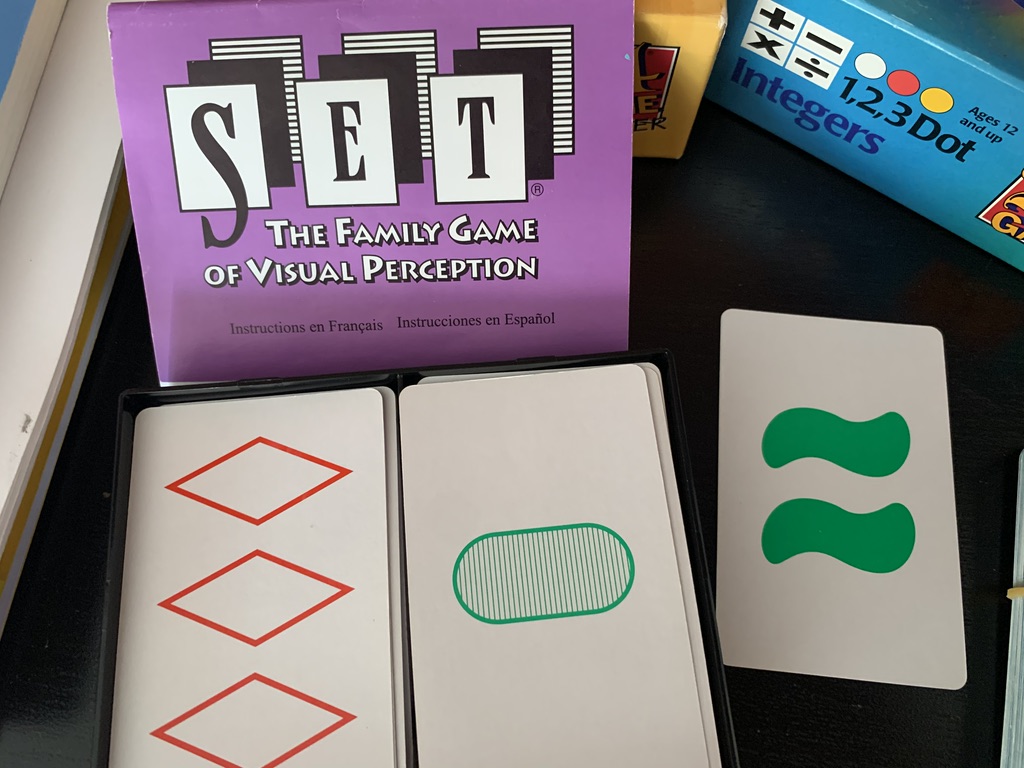
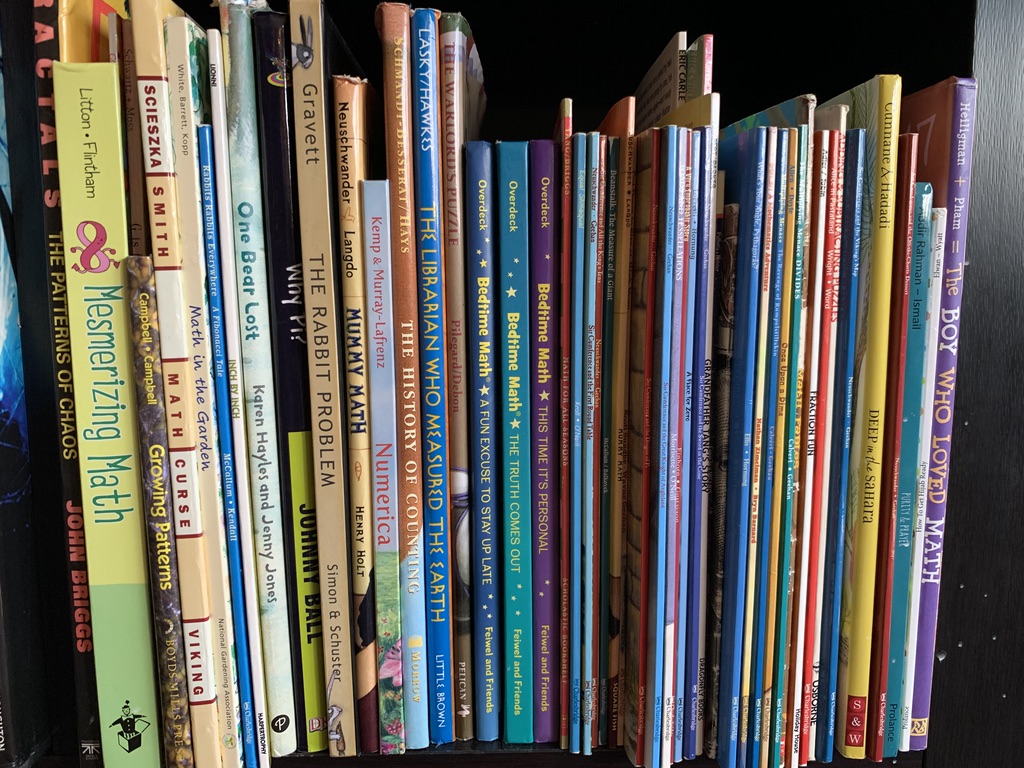
New for this round of math units are geometry books from Siraj Books. I love the geometric designs that relate to the Muslim world as this perfectly transition and connects our math units with the history units for the year. While the geometry book are for our Geometry main lesson block for my 13-year-old, but if you wish to add them in, you may consider offering these designs to color in for younger students as they may need to be a bit older to utilize the geometry books if you are going to construct these designs.
I’ve been sharing math and geometry video tutorials for several years. Check out the complete playlist here. Love Math Games? Check out some of our favorites here.
Mental Math
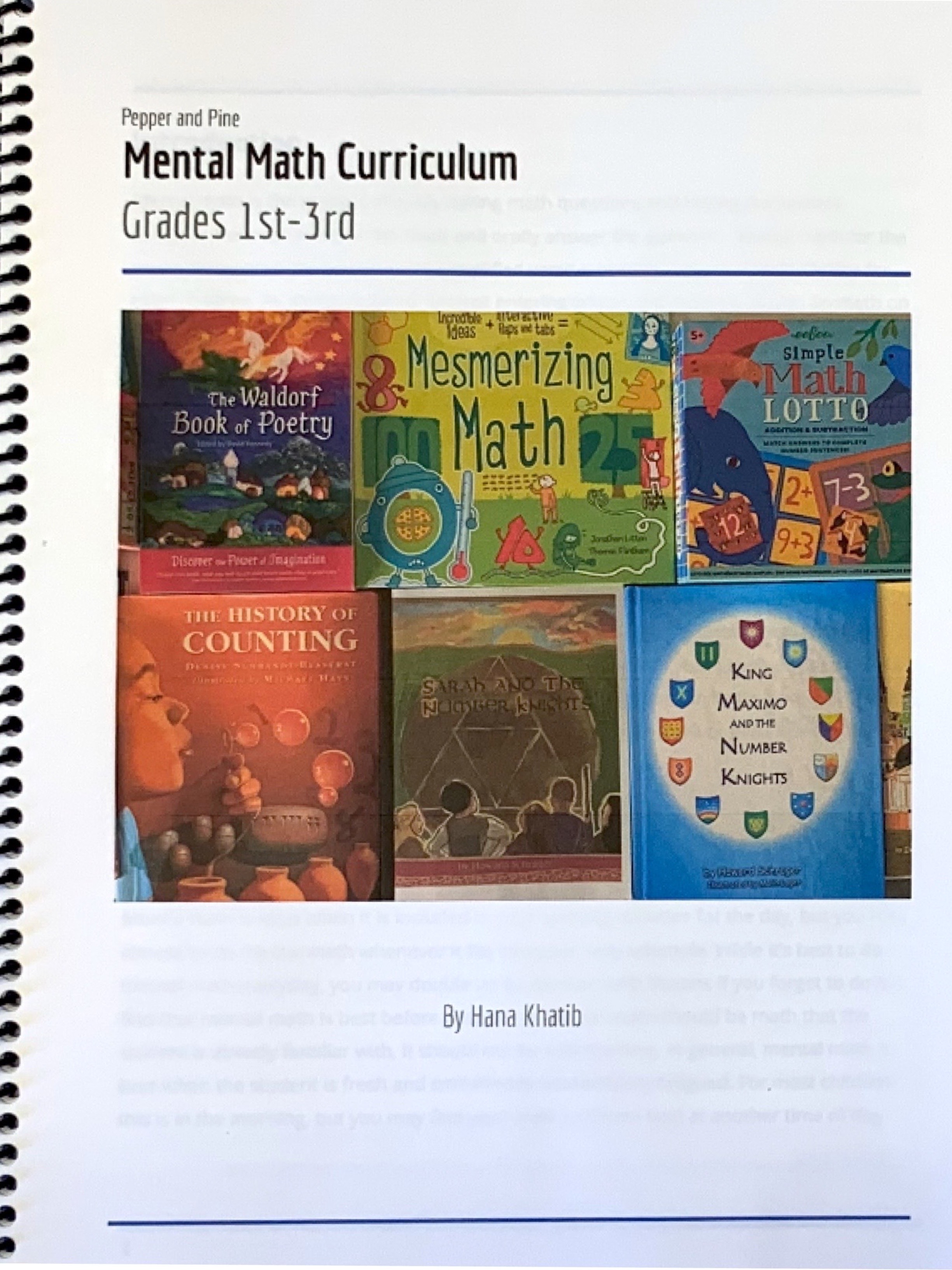
Mental math is the process of doing math problems in your head. Generally it’s math you already know, but are aiming for proficiency and mastery. Mental math calls on capabilities of memory, math ability and the ability to work out math problems in your head without a paper and pencil or calculator. Mental Math are math questions that can be worked out in one’s head. Often, they are two part questions which involve a multiplication or division question first, followed by an addition or subtraction question next. When you add in fractions, decimals and percents, you can easily see how complex the questions can become.
Math Picture Books
We just finished our math unit and we used nearly all the math books below during our six week unit. The exceptions were the reference books at the bottom of this list.
Here’s how this list can be helpful to you. I’ve included the name of the book with a picture along with a brief description, the grade level, math level and whether the book is worth owning or borrowing. I listed the math level at about one year above what is typically taught school to ensure the student is familiar with the math; however, I also list the grade level at which the student could either read the book on his own or listen to it read and understand the math even without it being formally taught.
Worth owning or borrowing? My method of choosing is the following: If the book is a story that’s well written and nicely illustrated and I expect to read it over and over again to my kids, then I think it’s worth owning. If it’s a book I’ll need for a math unit, it’s easier to own it than to borrow it. But here’s the bottom line: my kids liked different books than I did! So, while I thought borrowing the Sir Cumference series was fine, my nine-year reads them all the time, so those might be better owned than borrowed. Use your own method for owning or borrowing, and when in doubt, try it out. If you love it, buy it!
If you’d rather have a printable list, click here.
Times Table | Chalk Drawing
In our Waldorf inspired homeschool, we start off our year with our main lesson blocks in Math or Grammar. This year we are working on the times table primarily and since we want to take the year to master it (though it will likely take longer realistically), we are starting those lessons right from the start. For this unit, I’ve drawn a large multiplication table on the chalkboard and made it colorful for the sake of beauty and practicality. It’s my hope that my 9-year-old daughter will be able to use the table to help with math and quickly identify answers by following up or across the board with ease because of the colors. I also hope that the colors will help with skip counting and memory, but in my experience, the one thing that helps best with memorizing the times table is rhythmic clapping, skip counting and singing the times table. If each of the 12 times has a different chant or rhythm or song, that helps tremendously.
Today’s chalk drawing was inspired by two posts on Instagram. The first is Della at The Beauty of Play and the other is by Steiner Teacher. Both posts had either number charts or times tables drawn in beautiful colors. When you color math this way, you honor the beauty that is intrinsic in math and you invite the students to partake in that beauty as well. When the chalk drawing was complete, I added some of the games and books we will use throughout this unit. Putting them out and within easy grasp is also an invitation, and the fact that I color coded them too, was simply an addition on my part.
For this chalk drawing, I used Sargent Art Square Chalk pastels from Blick Art Materials. My chalkboard is by Ghent and it is 4’x6′. It used to be a mobile chalkboard on wheels and the chalkboard is double sided with the reverse as a dry erase board, but a few years ago, I decided to mount it on the wall and add more bookshelves below to house our growing collection of books.
Find me on YouTube, Twitter, Instagram and Facebook
More Math Resources
It seems like there are an abundance of innovative math resources available, and I am constantly impressed with the creative ways educators make learning math fun, interactive and memorable. A new item we have for our homeschool is the times table in this beautiful assortment of colors. It’s by Lino Natura and the Times Table in a rainbow of colors is just what I love.
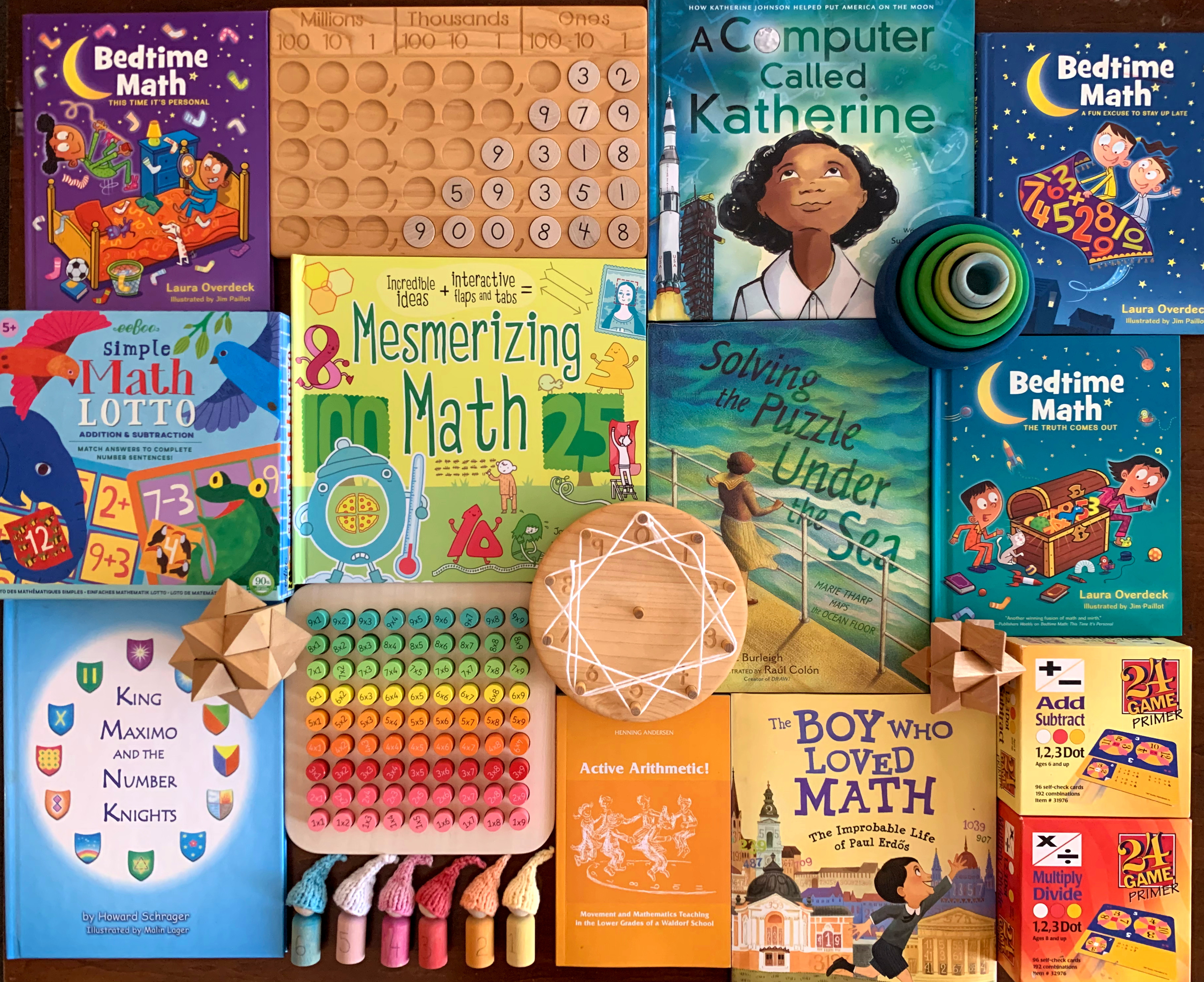
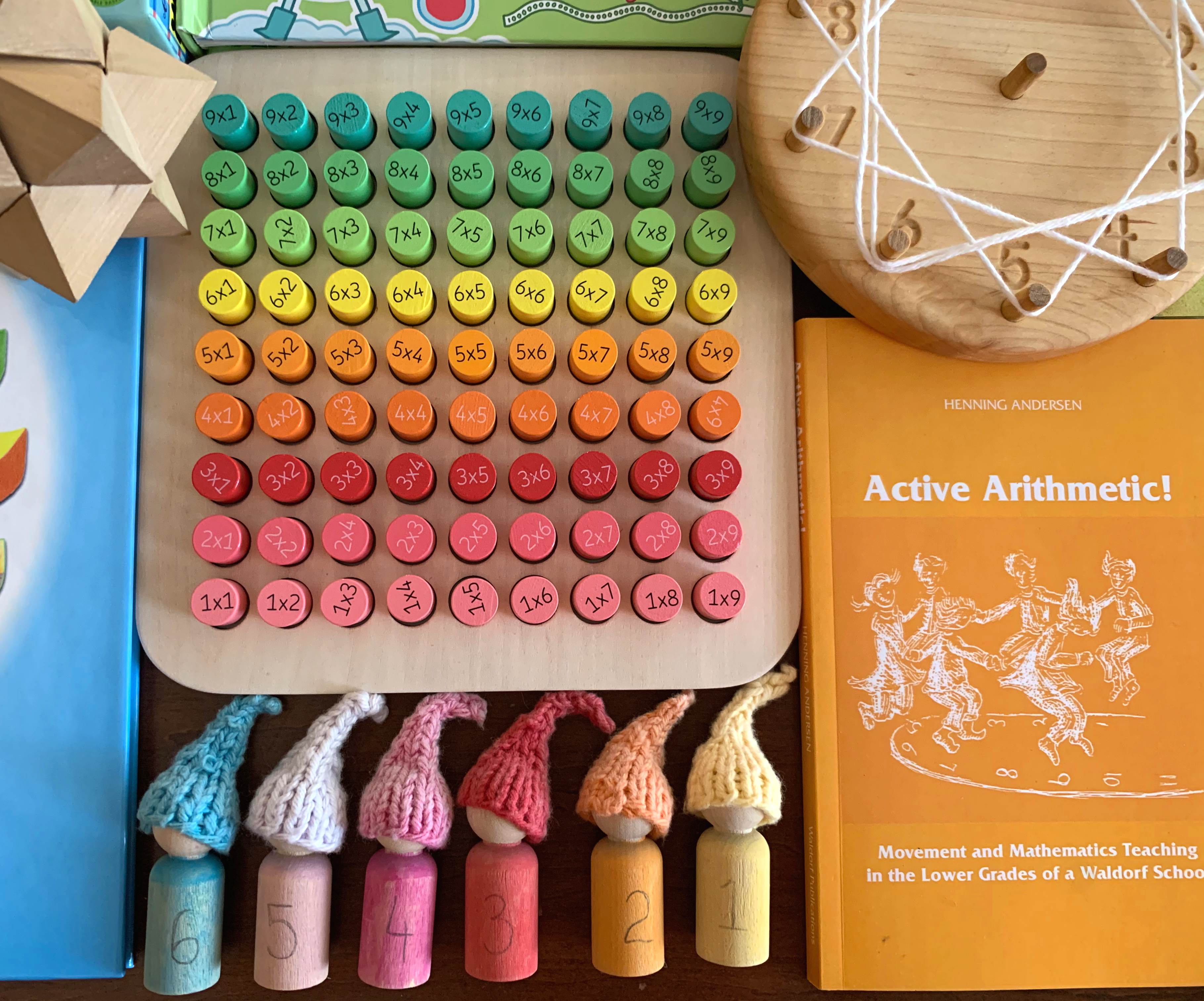
Find me on YouTube, Twitter, Instagram and Facebook
The Quality of Numbers 1-12
In a Waldorf setting, the numbers 1-12 are explored through daily stories which explore the quality of each. Let’s explore the numbers together. Each number has a video in which I share the resources I’m using to explore that number as well as a chalk drawing tutorial. I use a number of resources and for the bulk of the numbers the resources are the same, but there are specific math picture books that I’ve chosen for each number. I dipped into my own library to source these books as we’ve accumulated a number of math resources over the years. If you have just the right book for any of the numbers 1-12 (or beyond) please share your resource in the comment section.
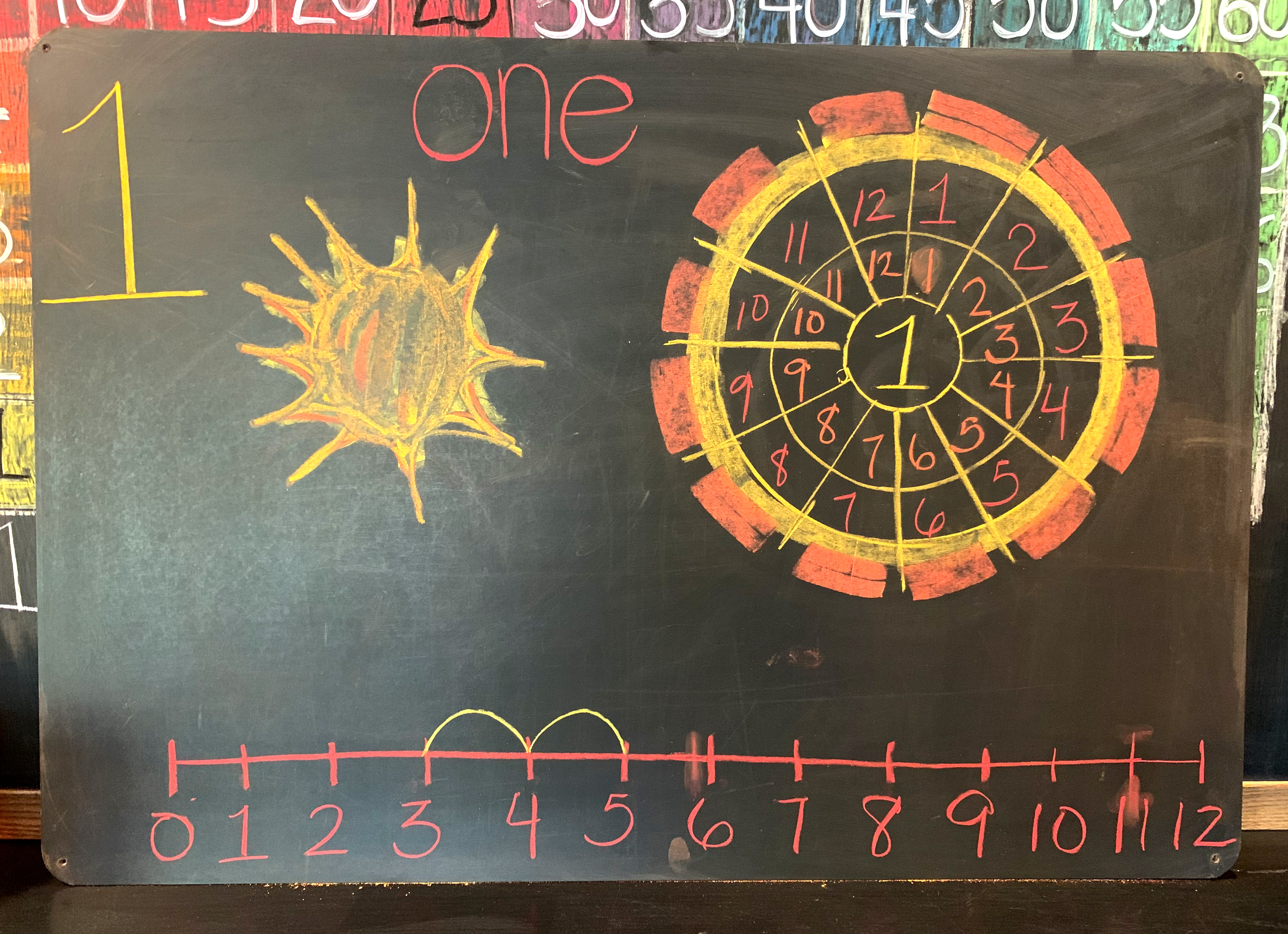
What’s the worth of exploring something you already know? We all know the number 1, even young children who haven’t even started school yet are familiar with the concept of one. So why spend a whole lesson on the quality of 1? In a Waldorf setting, the story is the lesson and the benefit of the lesson is learning about 1. Learning about one is part of the purpose, but the true lesson is in the story. The story is a living story, told by the teacher. And as with all living stories, the lessons are alive and live on within the child. Over time she embodies the story as she lives the quality of 1 and sees the quality of other numbers within her and outside of her. That’s the true quality of the lesson. It’s the experience that enlivens the child and allows a flat lifeless lesson about numbers come to life. So what’s the worth of exploring the most basic of all numbers? The story takes you on a journey to discover that the true quality of one is in its uniqueness. And ultimately the most unique of all is one’s own self. You are unique and there is nothing just like you. Within the lesson, you may focus on the shape of a circle or simply the single point, as one point is singular and doesn’t create a shape. Likewise a circle is both singular and infinite. There is also just our one sun, or one planet and one moon. Later these can be assembled to see that the sun and moon together make a pair and they share the quality of twoness as well. The resources we used for this unit are as follows and will include more as the main lesson block continues.





Continue reading and watching this series…
This video course takes you on a journey to explore the Numbers 1-12. Each video is rich with resources (games, books and more), original chalk drawing, and plenty of inspiration for you to take with you while you are teaching your math blocks. Resources and suggestions are to support your existing curriculum or may be used to create your own Quality of Numbers main lesson block.
Resources are suitable for grades Preschool and KG through Grade 3. All Stories and some story books may be used with preschoolers and kindergartners, while math concepts are intended for grades 1-3.
Find me on YouTube, Twitter, Instagram and Facebook
Workbooks
Workbooks. They have a place in a school setting, but when they are overused or are the means of teaching, they lose their effectiveness and novelty. One place we do use workbooks almost daily is with math. While the workbooks we use are simple, they are effective. Occasionally they become tedious, and for that reason I like to mix things up in a few ways. First, I use workbooks that are straightforward and support the learning we are doing (or I use it to guide the instruction and lessons). I don’t care for math programs that include a lot of variety in the math work. I love review, but not within the context of new learning. For review work, I use a math binder.
StraightForward Math Workbook Series
While we mainly use Key to Curriculum series I have recently become interested in the Straight Forward math workbook series. These math workbooks focus on the basics of math and provide questions to become proficient in that subject area. While I really liked the pre-algebra, decimals and fractions workbooks, I’m not liking the algebra and sentence diagramming workbooks as much. You can find the Geometry Series Straightforward math at Remedia Publications.
Key to Math Series | Math Curriculum for Fractions, Decimals, Percents, Algebra and Geometry
Key to math curriculum series is a workbook series that covers the topics of measurement, metric measurement, fractions, decimals, percents, geometry, and algebra. Work books are designed for easy self direction with little additional support. Each section provides simple examples and clear directions for understanding the math topic. The aim is for proficiency and eventually mastery of topics. They are focused on each of the subject areas without adding additional word problems or review questions or math, topics and other areas.
The geometry and algebra series do not have the rigor to support high school level, algebra and geometry. I find them perfect for middle school, geometry, and algebra or to support an existing curriculum. The algebra workbooks move slowly through algebraic concepts, including pre-algebra. We typically begin with measurement and metric measurement in grade 3 or 4. We continue with fractions, decimals and percents in grade 4 or 5. We follow it with geometry and grade 5 or 6. And conclude with algebra in grade 7 or 8.
Key to Curriculum Math Workbook Series
Key To math series are the only math books we ever buy. They are simple, student-led and environmental friendly! You read it right, they are environmental friendly. The workbooks contain about 45 pages and are printed on thin paper similar to newsprint paper. They are also simply laid out with easy to understand directions, so minimal instruction is needed. If you do need to help your child, the examples provided in the books are the perfect teaching tool. Simply write the example on a chalkboard or piece of paper and walk your child through the example. The series also comes with an answer key, which I highly recommend. The curriculum is sold individually or as a set, and I think they are really well priced. You can find the complete series at Rainbow Resource.
How to Make a Math Binder
Creating a math binder is an easy way to take the best worksheets from a variety of workbooks. I take worksheets that are about 1-3 grade levels below with the intention that this daily math shouldn’t take more than 10 minutes, should be easy, and cover basic math.
Find me on YouTube, Twitter, Instagram and Facebook
Fractions
It’s my opinion that fractions are the most challenging math concepts that elementary students have to master. And while in a relatively short space of time they can become fairly proficient in calculating fractions, decimals and percents on paper, I do think it takes years, even decades to fully master the concept and practice of fractions. The resources I’m sharing can easily complement an existing math curriculum or they can be the resources you use to create your own curriculum.
Find me on YouTube, Twitter, Instagram and Facebook
Geometry
Geometry is one of the most fascinating fields of math a student will encounter, in my opinion. There’s so much you can do when children are young with simple math centered on identification of shapes and solids. While introducing geometry this way and with picture books may not reflect the Waldorf approach authentically, it has been our approach in our homeschool for years. I love adding living books into our lessons because I’m often at a loss for stories of my own. Plus, I am not a teacher by profession and rarely solely rely on a curriculum, so I appreciate the breadth and depth of the books and resources available.
I have an entire blog post dedicated to the Waldorf approach to teaching Geometry. You can check it out here.
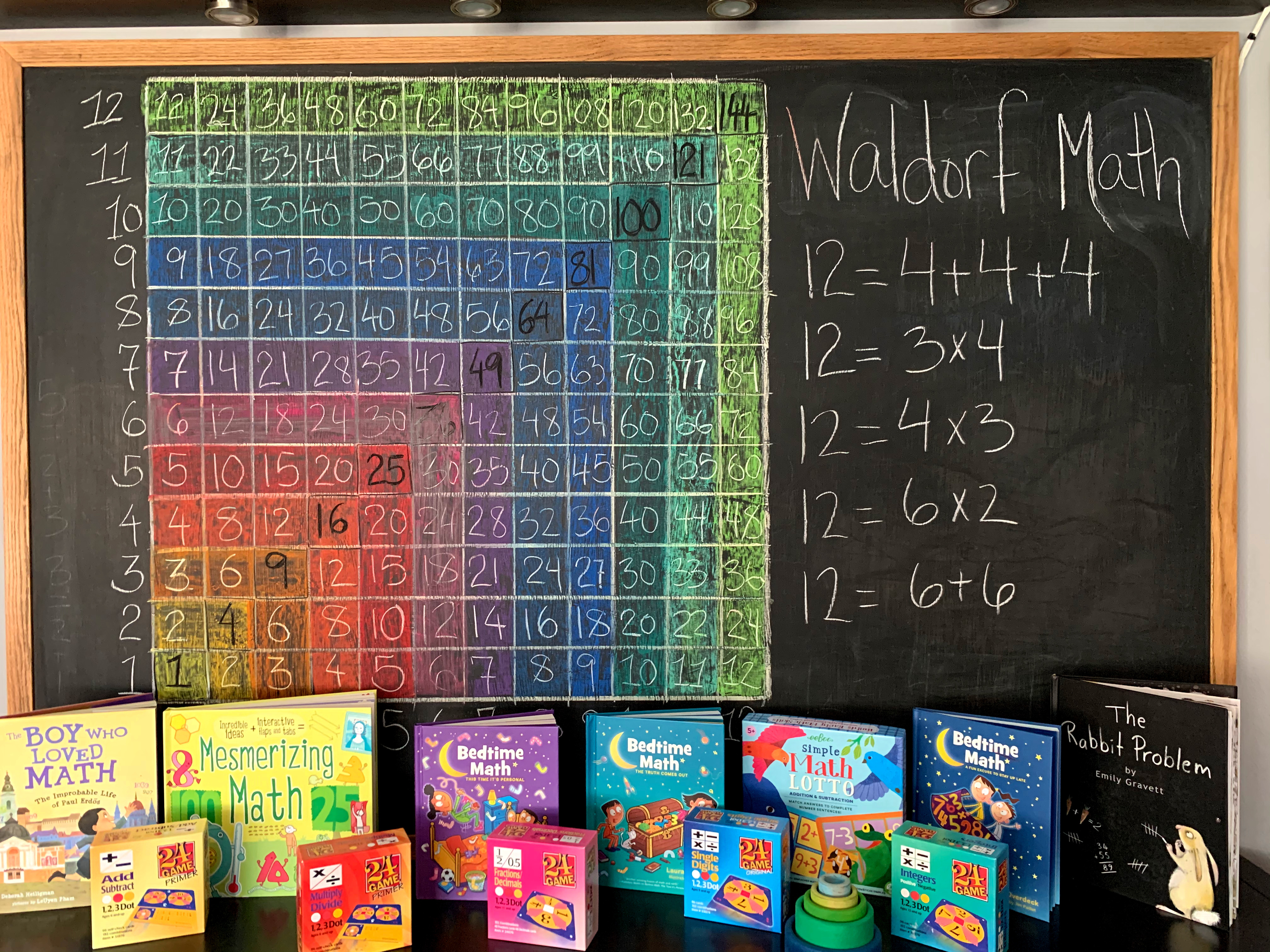
Hi Hana,
I found this sale too late. The coupon doesn’t work anymore. I am new to Waldorf so was looking to buy many things. Will you bring the sal eback anytime soon?